In the vast world of metal materials,
304 stainless steel pipes and their derivative products, 304 stainless steel seamless pipes, have become indispensable basic materials in many industrial and civil fields with their unique properties, wide application fields, and excellent durability.
Characteristics of 304 seamless stainless steel pipe
Chemical composition of 304 stainless steel pipe: Carbon C: ≤0.08, Silicon Si ≤1.00, Manganese Mn ≤20.00, Phosphorus p: ≤0.035, Sulfur S: ≤0.030, Nickel Ni 8.00-11.00, Chromium Cr: 18.00-20.00
Mechanical properties of 304 stainless steel pipe: Tensile strength ≥520Mpa, Yield strength ≥210Mpa, Elongation (heat treated state) ≥35%, Elongation (non-heat treated state) ≥25%
Product specifications: outer diameter 1mm~1200mm, wall thickness 1.0~100mm
Production method: welding, delivery status: heat treatment + washing.
First, the material characteristics of 304 stainless steel
304 stainless steel, also known as 18/8 stainless steel, is a widely used austenitic stainless steel. Its chemical composition mainly includes iron (Fe), chromium (Cr), nickel (Ni), and a small amount of carbon (C), silicon (Si), manganese (Mn), and other elements. Among them, the content of chromium is about 18% and the content of nickel is about 8%. These two elements give 304 stainless steel excellent corrosion resistance and heat resistance.
1. Corrosion resistance: 304 stainless steel can show good corrosion resistance in most environments, especially in oxidizing environments, such as dilute nitric acid, dilute acetic acid, and sulfuric acid at room temperature. This is due to the dense chromium oxide protective film formed on its surface, which effectively prevents further oxidation reactions.
2. Heat resistance: 304 stainless steel can maintain stable mechanical properties and corrosion resistance within a temperature range below 870°C. Although its strength and hardness will decrease above this temperature, it can still maintain good oxidation resistance and is suitable for applications in a variety of high temperature environments.
Second, the production process of 304 stainless steel pipes and 304 stainless steel seamless steel pipes
The production process of 304 stainless steel pipes
1. Raw material preparation: Use high-quality 304 stainless steel sheets or coils as raw materials to ensure the quality of the finished product.
2. Forming: The raw materials are processed into a tube through processes such as rolling, welding, or drawing. Welded tubes are usually welded automatically or manually, while drawn tubes are gradually stretched to the required diameter through a die.
3. Polishing and cleaning: The inner and outer surfaces of the tube are polished to improve its finish and aesthetics. At the same time, it is thoroughly cleaned to remove impurities such as grease, dust, etc.
4. Inspection and testing: The finished product is inspected for various indicators such as size, wall thickness, tensile strength, yield strength, hardness, and corrosion resistance to ensure compliance with relevant standards.
The production process of 304 stainless steel seamless pipe
1. Perforation: The solid round billet is perforated into a hollow tube billet by hot rolling perforation or extrusion perforation technology.
2. Hot rolling and cold rolling: According to the requirements of the tube diameter and wall thickness, the tube billet is hot rolled or cold rolled to achieve the required dimensional accuracy and surface quality.
3. Heat treatment: The steel pipe is solution-treated to improve its corrosion resistance and mechanical properties. Solution treatment usually involves heating to 1010-1150°C, holding for a period of time, and then rapidly cooling.
4. Testing and inspection: Similar to welded pipes, seamless steel pipes are also subject to strict testing of size, wall thickness, mechanical properties, and corrosion resistance.
Third, the application areas of 304 stainless steel pipes and 304 stainless steel seamless pipes
- Food processing equipment: Because 304 stainless steel is non-toxic, odorless, easy to clean, and corrosion-resistant, it is widely used in food processing equipment, such as conveying pipelines, storage tanks, agitators, etc.
- Chemical equipment: In the chemical industry, 304 stainless steel pipes and seamless steel pipes are often used to transport corrosive liquids and gases, such as acids, alkalis, and salt solutions.
- Automobile manufacturing: In automobile manufacturing, 304 stainless steel seamless pipes are used to manufacture key components such as exhaust systems and fuel systems because they can withstand high temperature, high pressure, and corrosive environments.
Fourth, maintenance of 304 stainless steel pipes and 304 stainless steel seamless steel pipes
1. Regular cleaning: Regularly use neutral detergent to clean the inner and outer surfaces of the pipe to remove dirt and sediment, and keep the pipe clean and unobstructed.
2. Avoid scratches: During transportation and installation, avoid using sharp tools or hard objects to scratch the surface of the pipe to avoid affecting its corrosion resistance and aesthetics.
3. Inspection and replacement: Regularly check the wall thickness, welds, joints, and other key parts of the pipe, and replace them in time if abnormalities are found to prevent safety accidents caused by pipe rupture or leakage.
4. Anti-corrosion treatment: In special environments, such as highly corrosive media, additional anti-corrosion treatment can be performed on the pipe, such as coating anti-corrosion paint or installing cathodic protection devices.
5. Correct storage: Avoid direct sunlight and rain during storage, keep dry and ventilated, and avoid direct contact with corrosive substances such as acids and alkalis.
In summary, 304 stainless steel pipes and 304 stainless steel seamless steel pipes occupy an important position in the metal pipe market with their unique material properties and wide application fields. Whether it is food processing, chemical equipment, medical equipment, architectural decoration, or automobile manufacturing, they can provide reliable performance and lasting durability. However, in order to ensure its long-term stable operation, correct maintenance is also essential. Through regular cleaning, inspection, and replacement, as well as proper anti-corrosion treatment, we can maximize the service life of 304 stainless steel pipes and seamless steel pipes, providing solid support for various application scenarios.
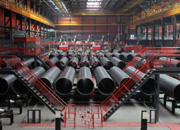 Threeway Steel is known as a professional supplier engaged in manufacturing and distributing a wide range of steel pipe, and our headquarter located the central part of China – Hunan and six associated factories throughout China.
Threeway Steel is known as a professional supplier engaged in manufacturing and distributing a wide range of steel pipe, and our headquarter located the central part of China – Hunan and six associated factories throughout China.
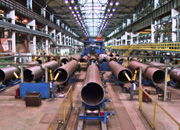 Threeway Steel is known as a professional supplier engaged in designing, manufacturing and distribution of a wide range of steel products with the headquarter located the central part of China – Hunan and six associated factories throughout China.
Threeway Steel is known as a professional supplier engaged in designing, manufacturing and distribution of a wide range of steel products with the headquarter located the central part of China – Hunan and six associated factories throughout China.
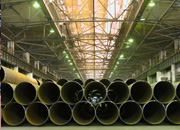 Threeway Steel is known as a professional supplier engaged in designing, manufacturing and distribution of a wide range of steel products with the headquarter located the central part of China – Hunan and six associated factories throughout China.
Threeway Steel is known as a professional supplier engaged in designing, manufacturing and distribution of a wide range of steel products with the headquarter located the central part of China – Hunan and six associated factories throughout China.
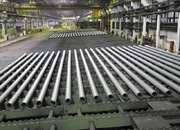 Threeway Steel is known as a professional supplier engaged in designing, manufacturing and distribution of a wide range of steel products with the headquarter located the central part of China – Hunan and six associated factories throughout China.
Threeway Steel is known as a professional supplier engaged in designing, manufacturing and distribution of a wide range of steel products with the headquarter located the central part of China – Hunan and six associated factories throughout China.
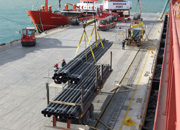 Threeway Steel is known as a professional supplier engaged in designing, manufacturing and distribution of a wide range of steel products with the headquarter located the central part of China – Hunan and six associated factories throughout China.
Threeway Steel is known as a professional supplier engaged in designing, manufacturing and distribution of a wide range of steel products with the headquarter located the central part of China – Hunan and six associated factories throughout China.

